This post may contain affiliate links which means we may get a commission if you make a purchase at no additional cost to you. As an Amazon Associate we earn from qualifying purchases. Please read our disclosure for details.
"Each product we feature has been independently selected and reviewed by our editorial team. If you make a purchase using the links included, we may earn a commission."
Before we delve into exploring Botswana National Parks let’s quickly head down into memory lane. After the devastating world wars and civil wars ended in most of Southern Africa, wildlife conservation became one of the primary concerns at national parks. Over the years, safari tourism has become increasingly popular thanks to the enormous attempts to bring wild animals back.
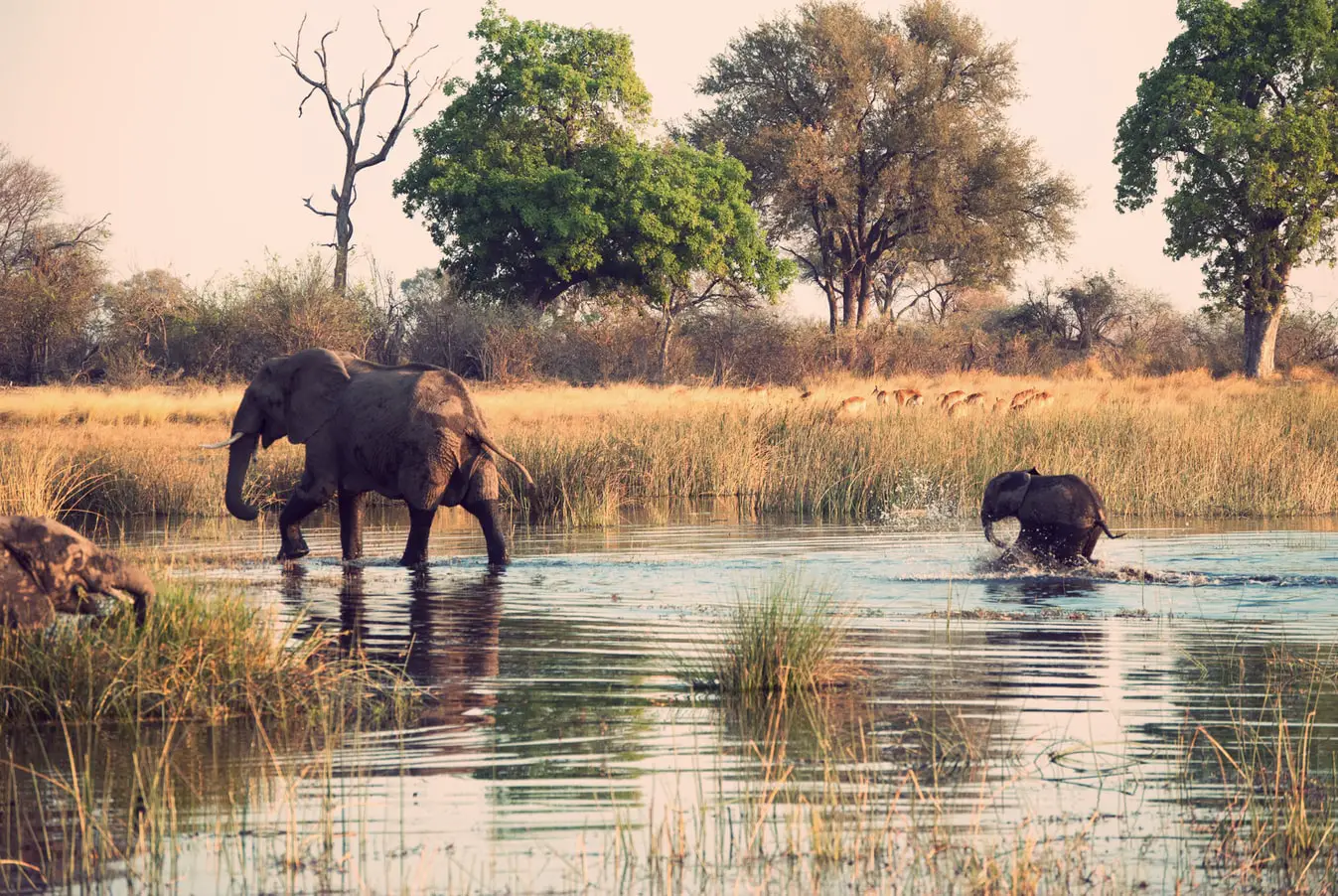
There are a lot of factors for a country to be considered a top safari destination, such as ideal climate, nutritious soil, water sources, and isolation. Botswana national parks offer all of that and more.
With more than 80% of the land allocated to wildlife, Botswana’s national parks and game reserves are unrivaled. In this article, we will take a detailed look at the African safari tours in Botswana.
Botswana National Park Regions
Botswana is about the size of France with approximately 224711.456 mi² miles (224711.456 mi), situated between 62.6°F – 80.6°F (17°C – 27°C) and 68°F – 86°F (20°C – 30°C).
One of the features that make Botswana ideal for wildlife is that this country consists mostly of plateaus rather than mountains. The altitude varies slightly throughout the country.
As a geographical region, Botswana can be divided into three distinct terrains. Almost 70% of the country is taken up by the Kalahari Desert in central and southwest Botswana. This is expected in the driest area because this region receives a minimum amount of rain.
The northeast of the country encompasses Makgadikgadi Pans, a large collection of several salt pans that flood seasonally. The central north and northwest are taken up by Okavango Delta, which is Africa’s largest inland delta fed by surrounding rivers like the Chobe River and Zambezi River.
Climate in Botswana
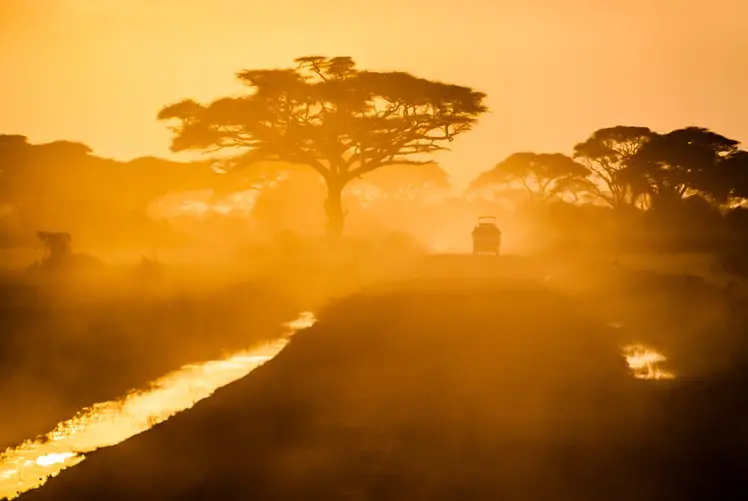
Botswana has a semi-arid climate in general; however, there is a transition from arid to subtropical as you go north. Overall, the country has two distinct seasons, dry and wet. The dry season is between April and October, while the wet season is between November and March.
The average temperature is 57.2°F (14°C) in the dry winter season and 26°C in the wet summer season. The day temperatures are around 25°C (77°F) during winter, but it can get very cold at night with temperatures around 6°C (42.8°F).
October is usually the hottest month with a maximum of 36°C (96.8°F). The annual rains that start in November bring relief as the temperature slightly drops to 20°C – 30°C (68°F – 86°F). The rains are usually in the form of heavy showers in the afternoon.
The Kalahari region experiences a long dry season with minimum rainfall to the extent of severe drought. Okavango Delta is the other extreme in the north, where the rains cause part of the delta to be partially submerged. The best time to visit Botswana is during the temperate summer period of May to October with moderate rainfall.
Wildlife in Botswana National Park
Considering the diversity of landscape, vegetation, and climate, it is no surprise that Botswana is the ultimate African safari destination. Through the combined efforts of the government and the local communities, a majority of Botswana is allocated to wildlife.

Amongst Botswana parks, you will find national parks that offer not only exciting sights of the big five but also massive herds of antelopes, rare species and migratory birds. Before talking about the best national parks in Botswana, let’s summarize the scope of wildlife in the country. The dry Kalahari region is abundant in antelopes and predators that have adapted to the dry climate.
The Makgadikgadi Pans witness a tremendous migration of herbivores like zebra, elephant, and wildebeest, while many predators follow and hunt them.
The Okavango Delta and the riverbanks in the north are ideal for rhinos, buffalo, elephants, big cats, and antelopes, but they are also home to species living in the delta such as hippo and crocodile.
The main predators are the black-maned lion, leopard, cheetah, both brown and spotted hyena, bat-eared fox, and wild dog.
Also, check out some of our blog posts on Zimbabwe and Eswatini National Parks.
- Your Safari Packing List for Botswana
- The Most Exhaustive List of African National Parks
- Other Travel Destinations in Africa
- What are the Main Tourist Attraction in Africa?
- 15 Best Countries to Visit in Africa for Vacation
Related Content
The Best Safari Packing List for Botswana
Experience African Easter Traditions
Namibia Travel Guide
The Best Countries to Visit in Africa
Is Johannesburg Safe?
The Best Safari Spots in Botswana National Parks
Kgalagadi Transfrontier Park
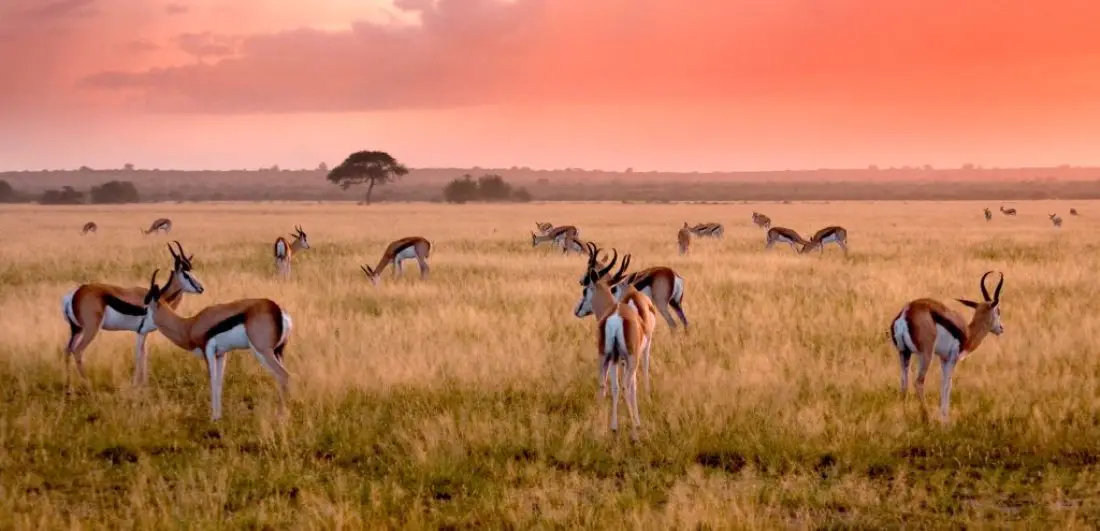
Situated at the intersection of South Africa, Namibia, and Botswana, Kgalagadi is a transfrontier park that transcends country borders. As the southwestern tip of Kalahari, it is characterized by excellent wildlife sightings with massive red dunes in the background.
The park is ideal for watching predators prey on herbivores because it provides natural lookout points on top of the dunes.
Central Kalahari Game Reserve
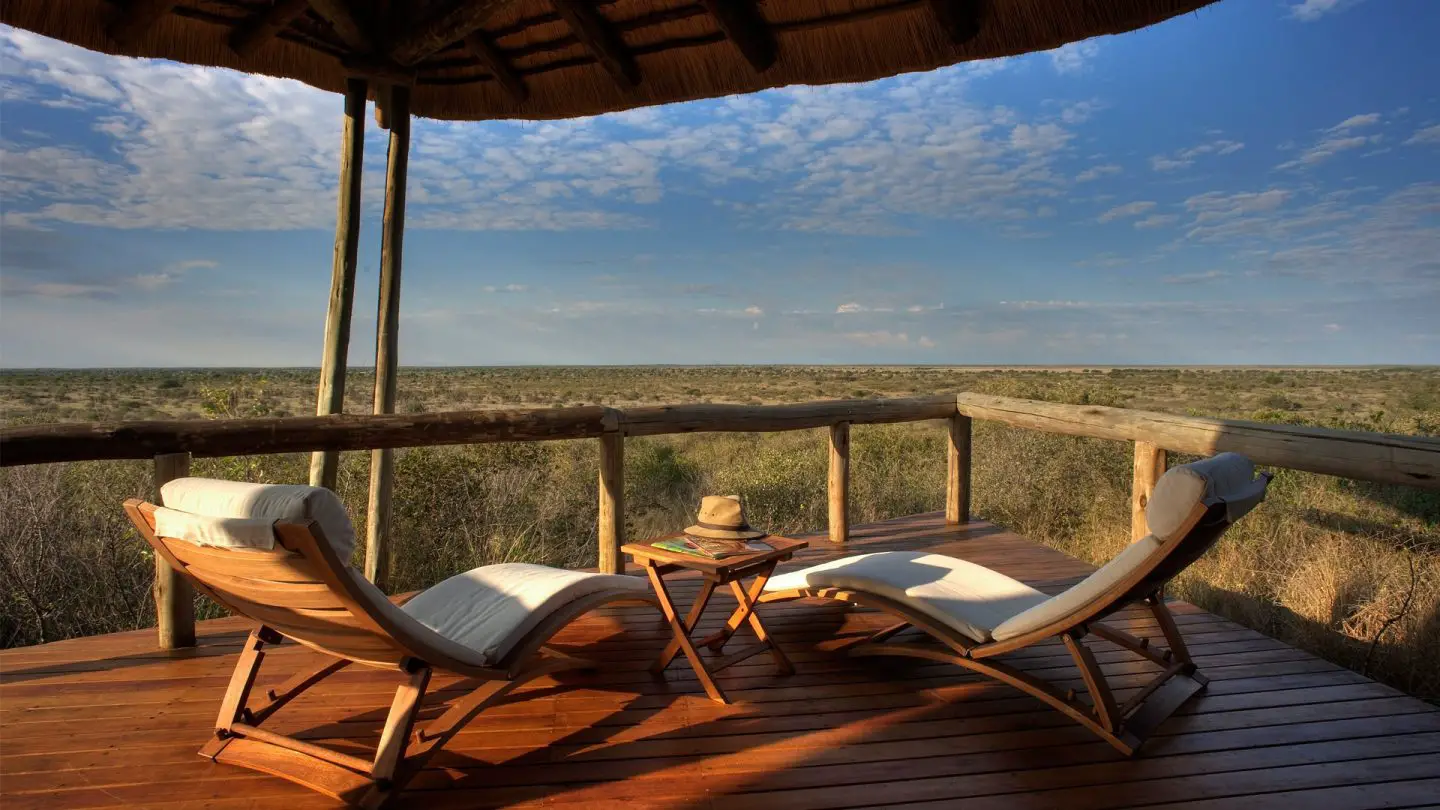
Central Kalahari is the second-largest game viewing reserve in the world, even larger than countries like the Netherlands.
With the vast expanses of Savannah interrupted by only dry river beds and dunes, your sight is limited by the sky and the horizon. Although some animals have difficulty adapting to the desert-like environment, Central Kalahari is considered the best spot for cheetah sightings.
The park is also renowned for the prominent San heritage, which you can observe by joining walking safaris guided by Bushmen trackers.
Botswana’s Chobe National Park

Chobe National Park founded near the Chobe River is the oldest Botswana game reserves and national park in Botswana. The wildlife in Chobe is regarded as one of the most diverse and the highest population in Africa.
It has four distinct ecosystems that boast a wide range of vegetation and attract all types of wild animals. Besides the big 5 herds containing thousands of animals, Chobe is home to rare antelopes like sable, red lechwe and roan. The park’s proximity to Victoria Falls makes it an ideal gateway into countries like Zambia and Zimbabwe.
Moremi Game Reserve

Moremi Game Reserve occupies the eastern half of Okavango Delta, one of the largest inland deltas in the world. The delta features both wet and dry plains that draw hundreds of mammal species.
With over 200,000 large mammals, Okavango’s Moremi is one of the densest game reserves in Africa and the best for viewing wild dogs and hyena in riverine forests. Besides the conventional Botswana National Parks safari tours, the highlight of Moremi is the traditional mokoro cruise that offers an authentic river-safari experience.
Makgadikgadi Pans National Park
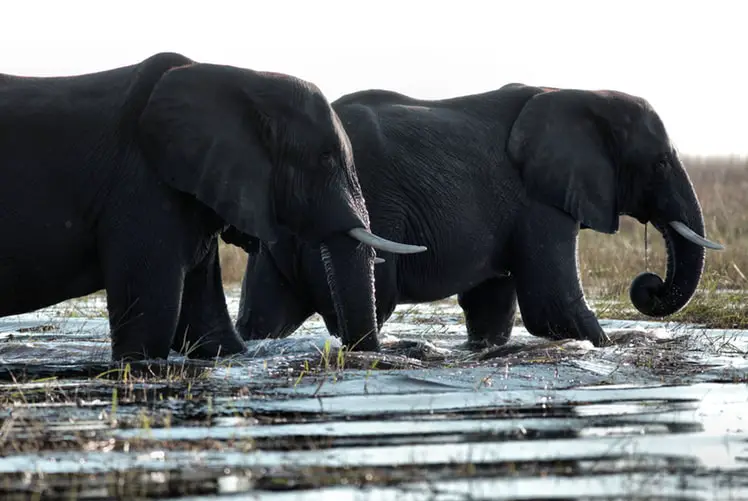
Makgadikgadi is the second largest salt pan in the world after Bolivia’s Uyuni Salt Pan. Although it is mostly desolated throughout the year, annual rains help the growth of grassland nutritious for herbivores. So, the region receives a massive migration of zebra, springbok, and blue wildebeest, followed by large predators like lions and leopards.
Nxai Pan Game Reserve
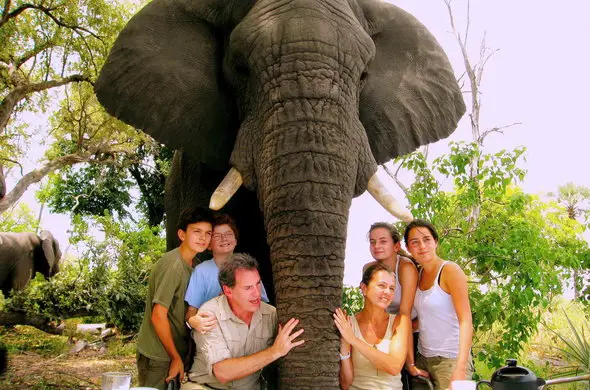
Nxai Pan, one of the largest pans in Makgadikgadi, has a separate game reserve. Its fauna and flora are similar to the rest of Makgadikgadi. But Nxai Pan has a bonus sight of the famous Baines’ Baobabs, a rare Baobab species that was depicted in the stories and paintings of the famous explorer Thomas Baine.
Mokolodi Nature Reserve

The safari parks in Botswana are mostly far from the capital city Gaborone, so Mokolodi Nature Reserve stands out since it is only 10 km outside the city. The nature reserve was founded by the Mokolodi Wildlife Foundation that aims to conserve rare species like southern white rhinoceros. The park is home to big 5, as well as rare species indigenous to northern South Africa.
Stevens Ford Game Reserve

This private game reserve is part of the Tuli Block near the Limpopo River. It offers a relaxing getaway at luxurious cottages and campsites next to wildlife viewing areas with species of zebra, giraffe, waterbuck, hippo, crocodile, eland, and occasional big cats.
Khutse Game Reserve
This private game reserve is 240 km to the north of Gaborone and bound by Central Kalahari and Makgadikgadi in the north. It encompasses geographical features of both Kalahari and Makgadikgadi, creating a stunning landscape with salt pans and dunes. Khutse Game Reserve is also home to small San and Bakgalagadi Villages.
Mashatu Game Reserve
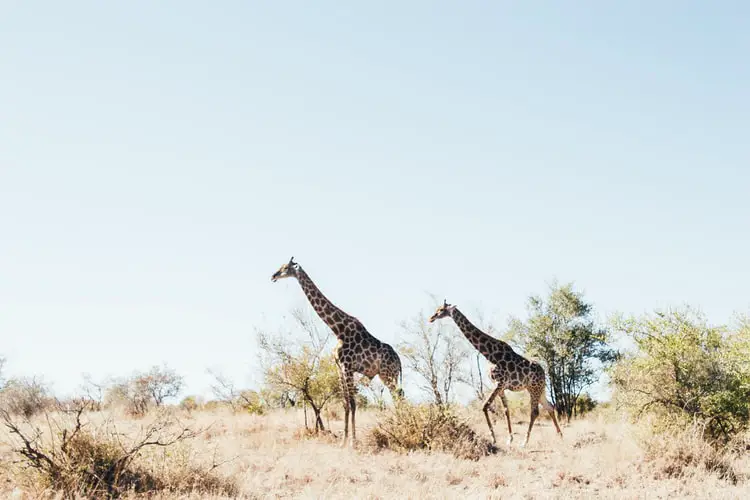
Mashatu is in the northern Tuli Block towards the eastern tip. This large private game reserve offers some of the best viewings of leopard, wild dog, and elephant in the country, although rhino and buffalo are absent.
The Most Commonly Asked Questions While Visiting Botswana National Parks
Yes, you can. However, that leaves you vulnerable to insect bites and sunburns, so we strongly advise against it.
Southern Africa countries like Botswana and South Africa which are located in the Southern Hemisphere close to the poles do experience relatively cold weather. It surely does get cold at night and early in the morning, especially during the dry season. The temperatures can drop below 50ºF (10ºC) in the Kalahari area.
You need a passport, but Botswana doesn’t require a visa for citizens from certain countries. Check the official website to see what the current requirement for your country is.
Maun is generally a safe place, and violent crime is rare. However, you still need to be vigilant and protect yourself from petty theft and avoid walking alone in the dark.
Conclusion: Botswana National Parks
Botswana, a sparsely populated country, protects some of Africa’s largest wilderness areas. With a Safari-based tourism-strongly controlled and often upscale, this vast land of nature is an important source of revenue for the country. Botswana is also second to the largest producer of diamonds in the world and has been transformed by trade into a middle-income nation (source: world’s largest producers of diamonds).
With a continuously growing wildlife ecosystem that sees 17% of Botswana land area devoted to wildlife conservation (source: Today in Botswana) and a Government who supports wildlife conservation by constitutionalizing the wildlife conservation act into law, Botswana would continue to be a tourist top choice destination for everything regarding wildlife safari in Africa.
